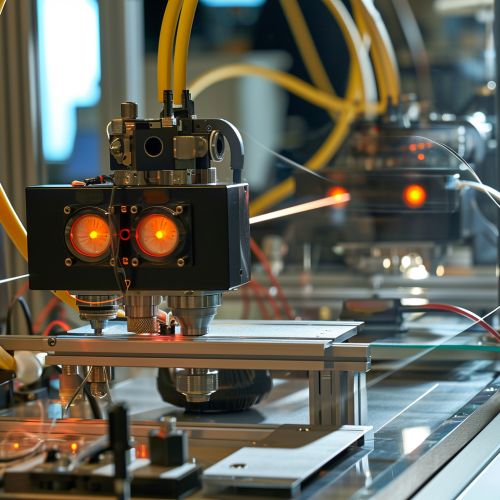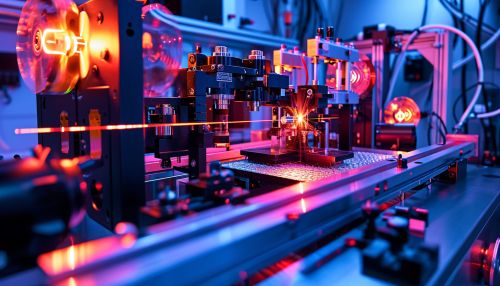Femtosecond Spectroscopy
Introduction
Femtosecond spectroscopy is a spectroscopic technique that uses ultrafast laser pulses, typically on the order of femtoseconds (10^-15 seconds), to investigate the properties of matter. This technique is particularly useful for studying chemical reactions and biological systems, as it can capture the ultrafast dynamics of molecular and atomic processes that occur on the femtosecond timescale.


Principles of Femtosecond Spectroscopy
Femtosecond spectroscopy is based on the principles of time-resolved spectroscopy, which involves the use of short laser pulses to probe the dynamics of a system over time. The key difference is the timescale of the pulses used. In femtosecond spectroscopy, the pulses are on the order of femtoseconds, allowing for the investigation of ultrafast processes.
The basic setup of a femtosecond spectroscopy experiment involves a femtosecond laser source, a beam splitter to create a pump and probe pulse, and a detector to measure the change in the probe pulse after interaction with the sample. The pump pulse excites the sample, and the probe pulse is used to measure the sample's response.
Femtosecond Laser Sources
The generation of femtosecond laser pulses is a crucial aspect of femtosecond spectroscopy. These ultrafast pulses are typically generated using mode-locked lasers, which can produce pulses with durations on the order of femtoseconds. The most common types of mode-locked lasers used in femtosecond spectroscopy are titanium-sapphire lasers and fiber lasers.
Techniques in Femtosecond Spectroscopy
There are several techniques in femtosecond spectroscopy, each with its unique advantages and applications. These include pump-probe spectroscopy, two-photon absorption spectroscopy, and coherent anti-Stokes Raman spectroscopy (CARS).
Pump-probe spectroscopy is the most basic and widely used technique in femtosecond spectroscopy. It involves the use of two laser pulses: the pump pulse to excite the sample and the probe pulse to monitor the sample's response.
Two-photon absorption spectroscopy is a nonlinear optical technique that involves the simultaneous absorption of two photons. This technique is particularly useful for studying processes in biological systems, as it allows for the imaging of living tissues with high spatial resolution.
CARS is a nonlinear optical technique that involves the interaction of three photons to generate a signal at a new frequency. This technique is particularly useful for studying vibrational modes in molecules.
Applications of Femtosecond Spectroscopy
Femtosecond spectroscopy has a wide range of applications in various fields, including chemistry, physics, biology, and materials science. In chemistry, it is used to study the dynamics of chemical reactions on the femtosecond timescale. In physics, it is used to investigate ultrafast processes in solids, liquids, and gases. In biology, it is used to study the dynamics of biological processes, such as protein folding and photosynthesis. In materials science, it is used to investigate the properties of materials, such as semiconductors and superconductors.
